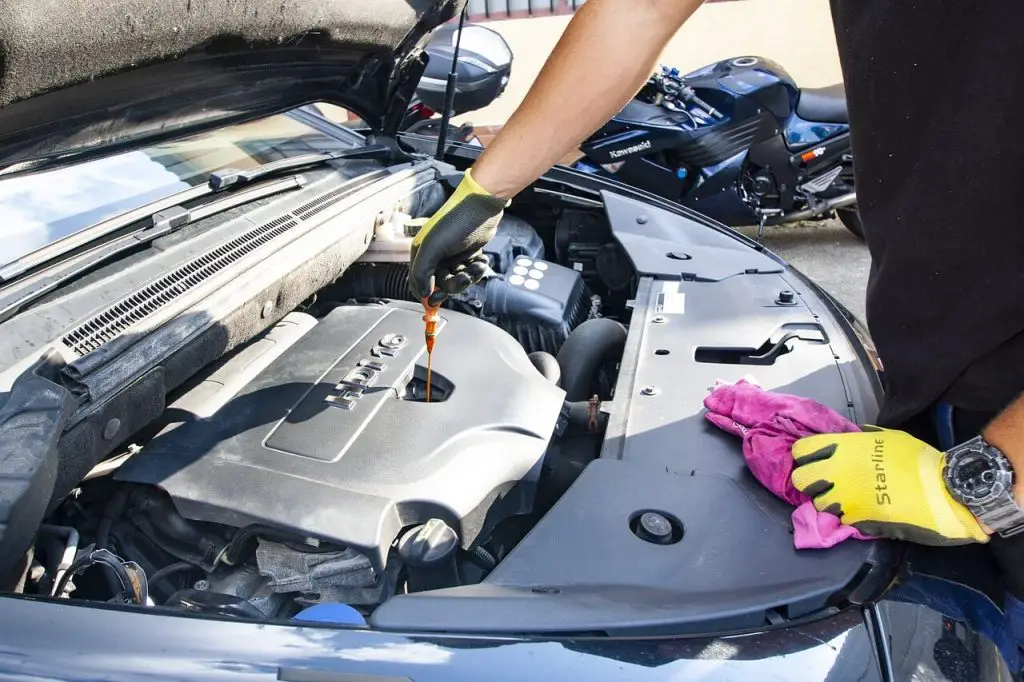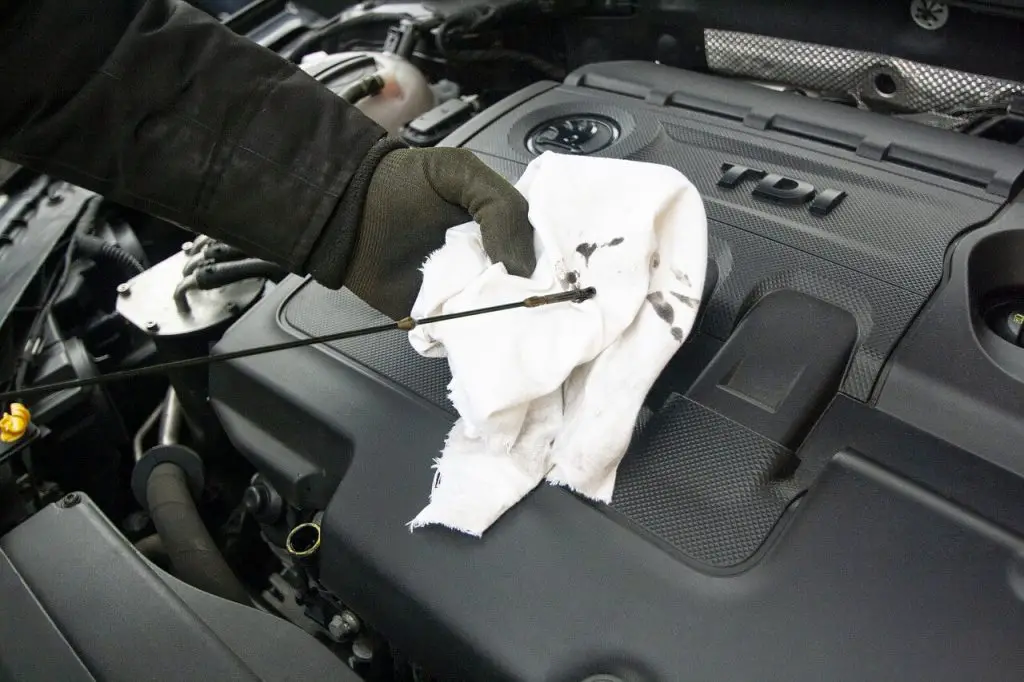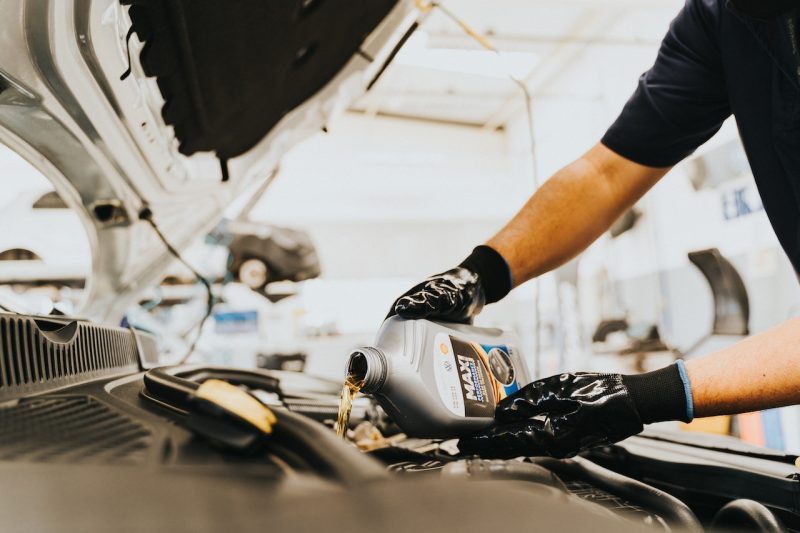Engine oil is integral to your car’s performance, keeping everything running smoothly. All engines consume a specific amount of oil over time, so it’s critical to routinely monitor the levels with an accurate reading obtained when the engine is hot. Yet, there are moments when you must add oil quickly to reach your destination. This begs the question: can you put oil in a hot engine?
Table of Contents
Can You Put Oil in A Hot Engine?
The answer is yes, you can add oil to a hot engine, when oil nearing or below MIN, quickly replenish without delay. You can also add more oil even though the engine is warm – no harm will be done to any components!
The safest way to add oil when an engine is hot is to park the car in a safe, level location and allow it to cool down before opening the hood. If you find yourself in an urgent situation and need to add oil fast, do not worry—it can be done risk-free. Before starting, turn off your engine and site back at least for a minimum of five minutes then proceed.
This will help prevent any potential splashing or spraying due to residual pressure stored in the system from running while hot. Once cooled down, open the hood and use an accurate dipstick reading to determine how much oil needs to be added (be sure not to overfill). If you don’t have access to a dipstick, use the manufacturer’s recommendation for oil viscosity and add accordingly. Finally, start the engine and check for any leaks before driving away.
In summary, it is safe to add oil when an engine is hot, although it’s always recommended to wait until it cools down to avoid any splashing or spraying. If you need to top off your vehicle’s oil in a pinch, follow the steps mentioned below.
- Turn off the engine and let it sit for at least five minutes.
- Open the hood and check levels with a dipstick (or use viscosity recommendations).
- Add oil as needed.
- And finally, start the engine again while keeping an eye out for any leaks.
With these simple steps, you can safely top up your engine oil when it’s running hot!
What happens if you add oil while the engine is still hot?
Adding oil to a hot engine can be dangerous. It causes the oil to become too thin and not provide the necessary lubrication your engine needs. If you add oil when the engine is running or still hot, there is an increased risk of vapor lock or oil aeration, leading to a loss of power in your vehicle’s engine.
It can also cause sludge buildup and blockages in the system due to incomplete combustion of fuel vapors. These potential problems will require expensive repairs and maintenance costs later on.
To guarantee your engine is adequately lubricated and secure, it’s imperative to let the motor cool down before topping up with oil. If you’re pressed for time, an external cooling system or fan can be used prior to refueling with oil.
When the temperature has dropped sufficiently, follow all instructions relevant for your car when refilling – only then can you guarantee that adequate preventive measures have been taken!
Is it important To have the correct Oil Level?
Ensuring the correct engine oil level in your car is not just advisable, it is absolutely critical! By having either too much or too little motor oil, you risk causing serious damage and wear to internal components – shortening the life of your engine significantly.
When asking yourself, “can I add engine oil when the engine is hot?”, it all depends on what type of liquid you are pouring in. While modern engines typically require synthetic oils that can withstand higher temperatures, adding any other kind could be hazardous and thus should always be checked with an authorized mechanic or your owner’s manual before being added while warm.
To make your vehicle engine remains healthy and runs optimally for long periods of time, it is very important to avoid adding too much oil in the engine weather it is cold or hot. If more oil needs to be added, check its current level on the dipstick first then wait until the engine cools down before topping up. Doing so will help prevent any potential overfilling or further damage.

How to check the engine oil Level?
Keeping your engine in top condition requires regular monitoring of both the level and quality of its oil. It’s ideal to check for this when the motor is cold, but if you can’t wait, here are some tips on how to get an accurate reading without having to cool down completely.
Before adding new oil or checking the oil level in a hot engine, please turn off the vehicle and allow it time to cool down. After cooling sufficiently—at least 10-15 minutes—open the hood and locate the dipstick near your engine block. Wipe off dirt or debris on the dipstick and reinsert it into its tube.
Remove the dipstick again and check the oil level; it should be between the two marks on the dipstick. You can add more if your engine oil is low, but only use high-quality oils designed for your engine type.
Also Read: Temporary Fix for Stuck Brake Caliper
How long does the vehicle engine take to cool down?
Engine cool-down time varies depending on the size and model of the engine, as well as the outside temperature. Generally speaking, it may take 30 minutes to an hour for an engine to cool down after running for a while. Allowing the engine to cool down before performing any type of maintenance is essential. Additionally, regularly monitoring its temperature while it runs for a prolonged length of time can help protect against the destruction caused by overheating and ensure that the engine does not become too hot.
How to Add engine oil correctly?
Once you have the right engine oil, it’s time to take on the task of adding it properly. There are a few steps involved in making sure that your vehicle is getting the proper amount of oil and that it’s done correctly:
1) Check Engine oil Level
For accurate measurements, your car must be parked on a flat surface with the engine cool before checking its levels. Then, unscrew and remove the dipstick from the engine and wipe it clean with a cloth so you can read it accurately later. Reinsert the dipstick into the tube until fully seated, then slowly pull it out again. Look for two marks labeled “Full” and “Low.” If your oil is at or below “Low,” you must add some oil.

3) Add your chosen engine oil
Carefully unscrew and remove the oil filler cap and set it aside so it will not be damaged. Use a funnel to pour the correct amount of oil into your car’s engine without spilling any on its paintwork. Pour slowly until you reach just below the “Full” mark on the dipstick.
4) Tight Oil Refill Cap Properly
After adding the correct amount of oil, be sure to replace the oil filler cap securely. This will ensure that all the oil stays in your engine and won’t leak over time. Use a wrench or ratchet to ensure it is correctly tightened before closing the hood.
5) Recheck oil level
After adding your new engine oil, check its levels again with a clean dipstick as explained previously in step 1). If necessary, add small amounts of the additional engine until it reaches just below the “Full” mark on the dipstick. Once done, simply wipe off any excess from around where you poured it.
Also Read: Why is my Car Leaking Oil When Parked
Conclusion
Ultimately, pouring oil into a hot engine is not an effective solution. Since the heat will thicken the oil and prevent it from adequately lubricating your engine, potential costly damage could occur. Furthermore, too much heat can cause other components of the motor to fail earlier than expected. For that reason, waiting until your vehicle has cooled off before topping up with new oil will ensure that everything runs smoothly for years to come! Hope this article clear you all concerns about can you put oil in a hot engine?






